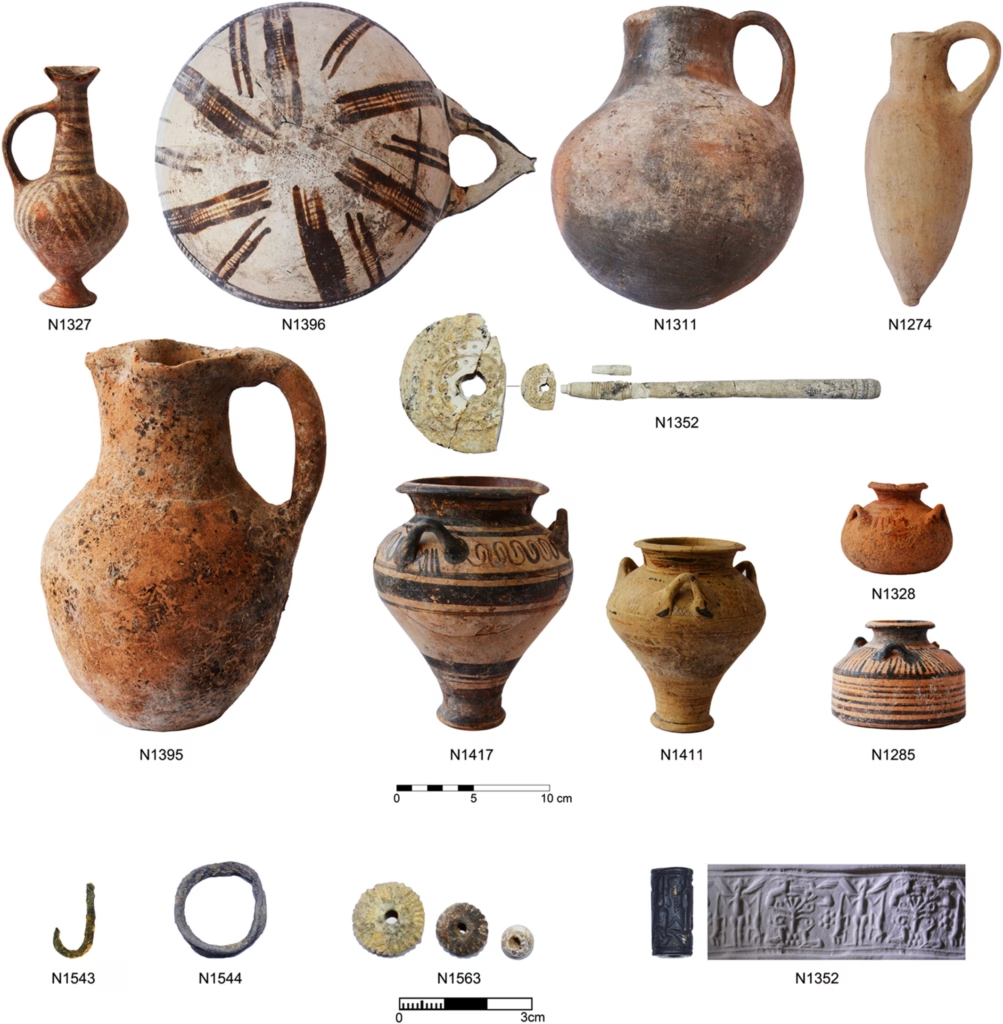Boat-Shaped Lead Artifacts Reveal Sophisticated Ancient Fishing Practices in the Eastern Mediterranean
Archaeologists working at the Hala Sultan Tekke archaeological site in Cyprus have uncovered five rare boat-shaped lead artifacts dating back more than 3,000 years to the Late Bronze Age. These unique objects, believed to be ancient fishing lures, closely resemble items found only once before — in the famous Uluburun shipwreck off the coast of modern-day Turkey.
Not Just Sinkers: Ancient Lead Lures That Reflect Light to Attract Big Fish
The artifacts were discovered in two different contexts — four in a burial known as “Tomb ZZ” and one inside what’s believed to have been a storage room within the city. Each piece features a distinct boat-like form with rounded or pointed ends, and some include holes or grooves.
Researchers believe these are not simple net weights but finely crafted fishing lures. When polished, the lead likely shimmered underwater, mimicking the flash of small fish to attract predators. The holes and grooves may have served as anchor points for hooks or fishing lines — revealing a surprisingly advanced fishing technology for the time.

A Port City Thriving on Copper and the Sea
Hala Sultan Tekke flourished between 1630 and 1150 BCE near a protected bay — now the Larnaca Salt Lake — becoming a key hub for trade due to its strategic location and robust copper production. Excavations show that fishing was also a vital part of daily life. Numerous fish bones found at the site, including species like mullet and grouper, highlight the community’s reliance on the sea for food.
Symbolic Designs? Boat Shapes May Reflect Cultural Significance
While functional, the boat-like shapes of the lures may also carry symbolic meaning. Researchers speculate that the design could represent local boats — possibly the lightweight, versatile “br” vessels widely used across the Levant. These boats were well-suited for both fishing and transport, and the miniature versions might have held ritual or cultural significance.

Striking Parallels with the Uluburun Shipwreck
One of the most intriguing aspects of this discovery is its timing. The tomb where four of the lures were found dates to around 1320 BCE — the same era as the Uluburun shipwreck. This synchronicity suggests that similar fishing methods or maritime technologies may have been shared or traded across Eastern Mediterranean cultures.
Buried with Fisherfolk? Tools Found Alongside Human Remains
Inside Tomb ZZ, the four lead lures were found alongside the remains of an adult man and woman, as well as pottery, a cylinder seal, a bronze hook, and other burial items — possibly indicating the pair had a close connection to fishing. The fifth lure was found near stone net weights in a suspected storage room, reinforcing the idea that it was part of a broader collection of fishing equipment.
Cover Image: Chamber Tombs VV, XX, YY, ZZ, and AB East and West during excavation. Credit: Peter M. Fischer and Rainer Feldbacher / CC BY-NC-ND 4.0





